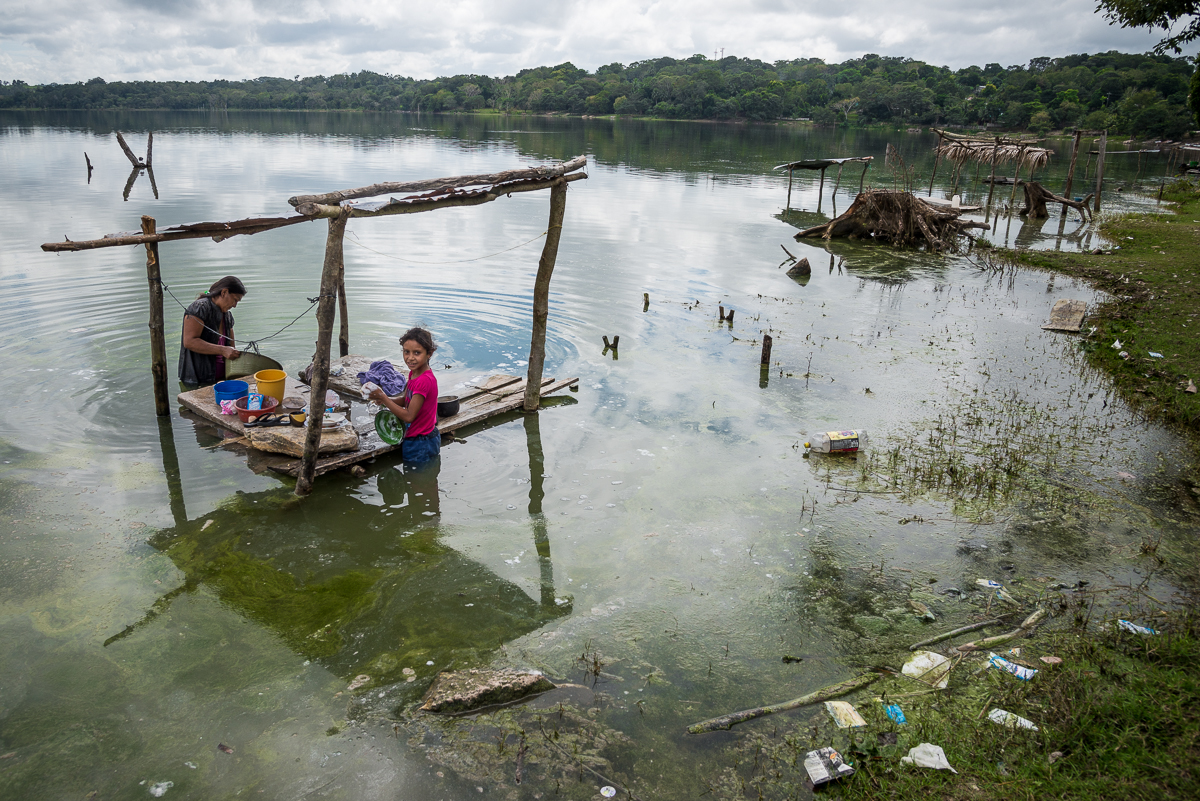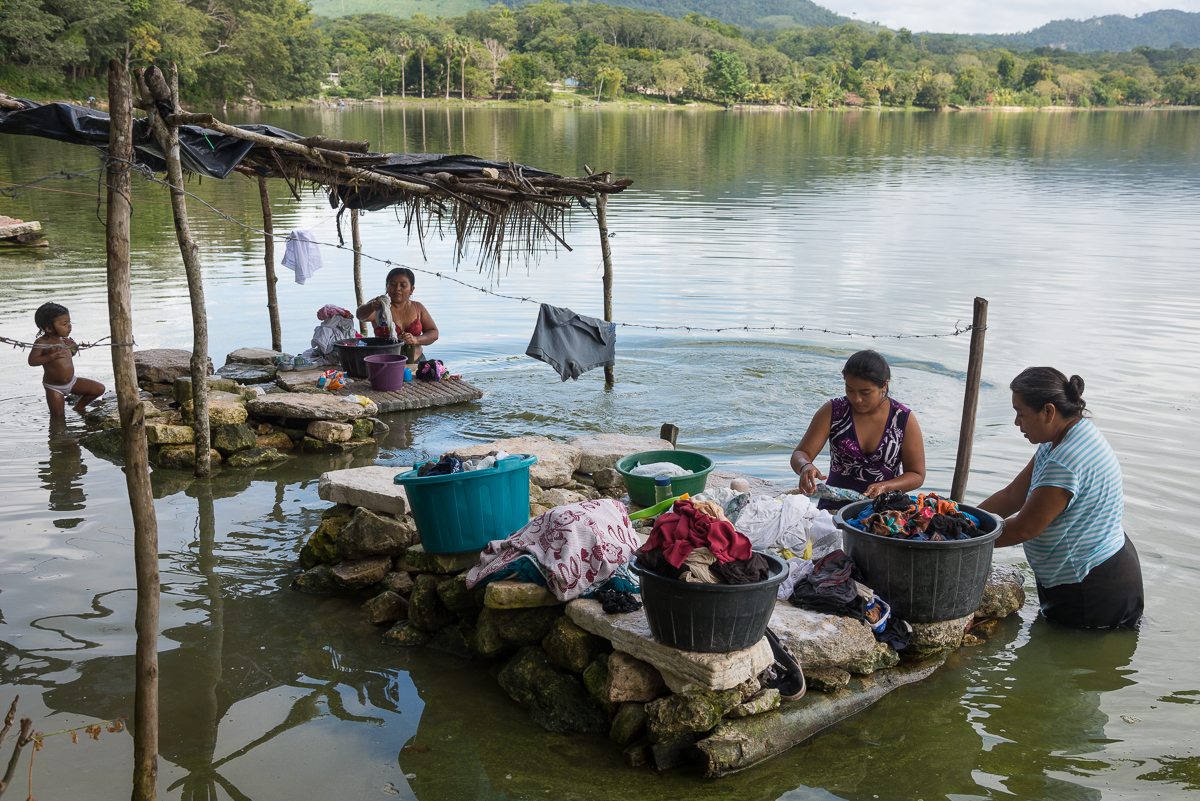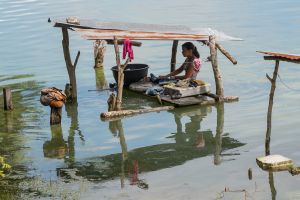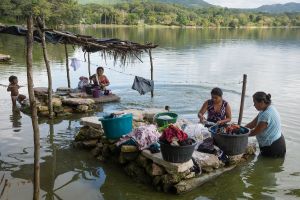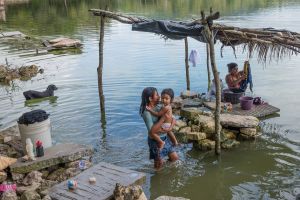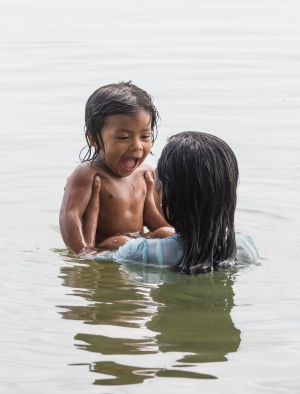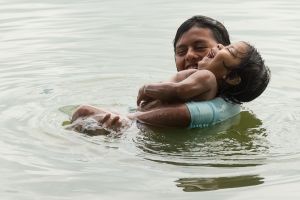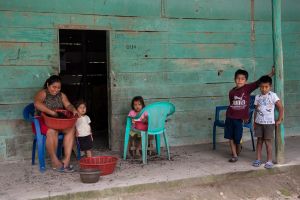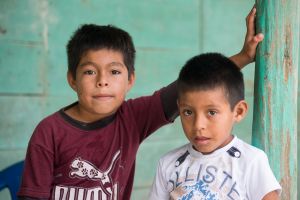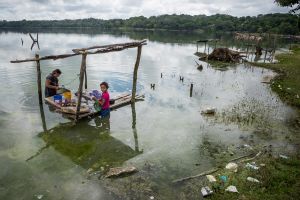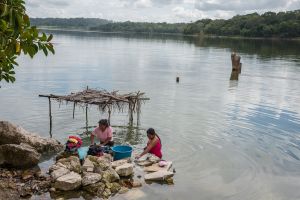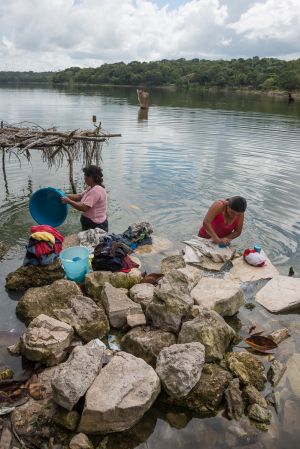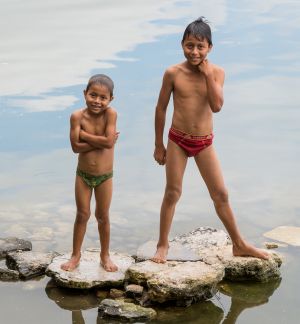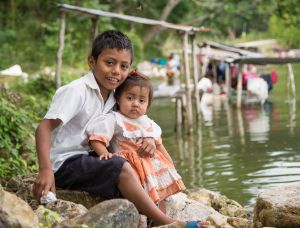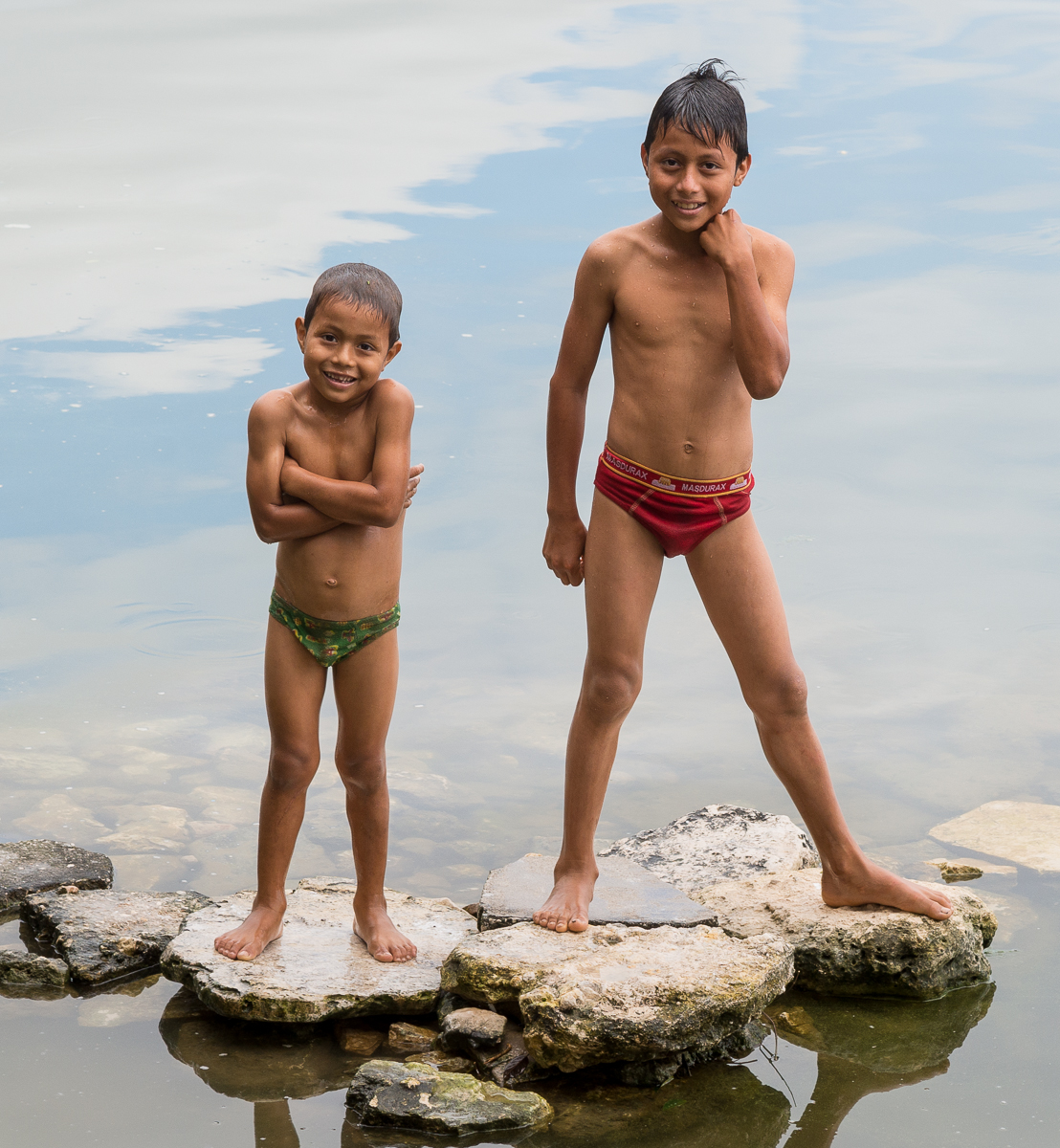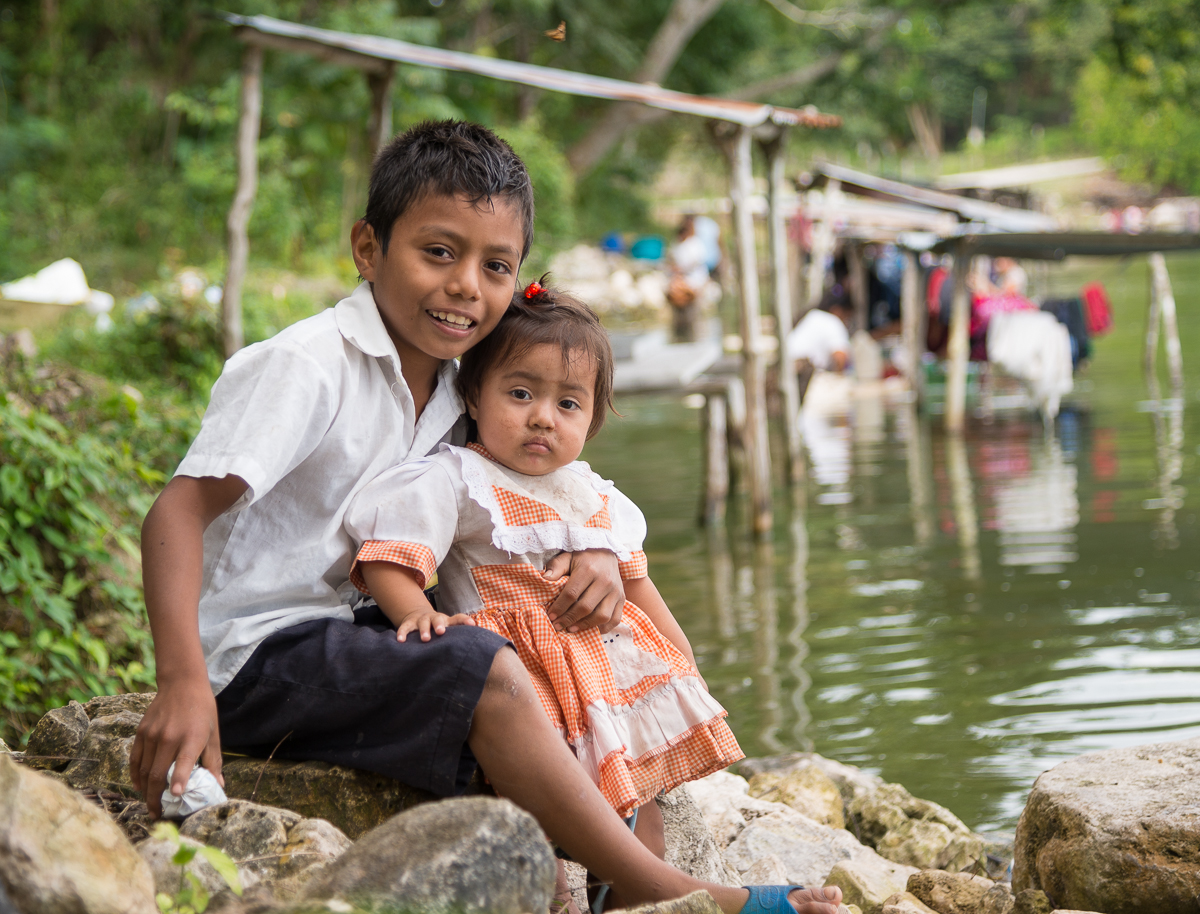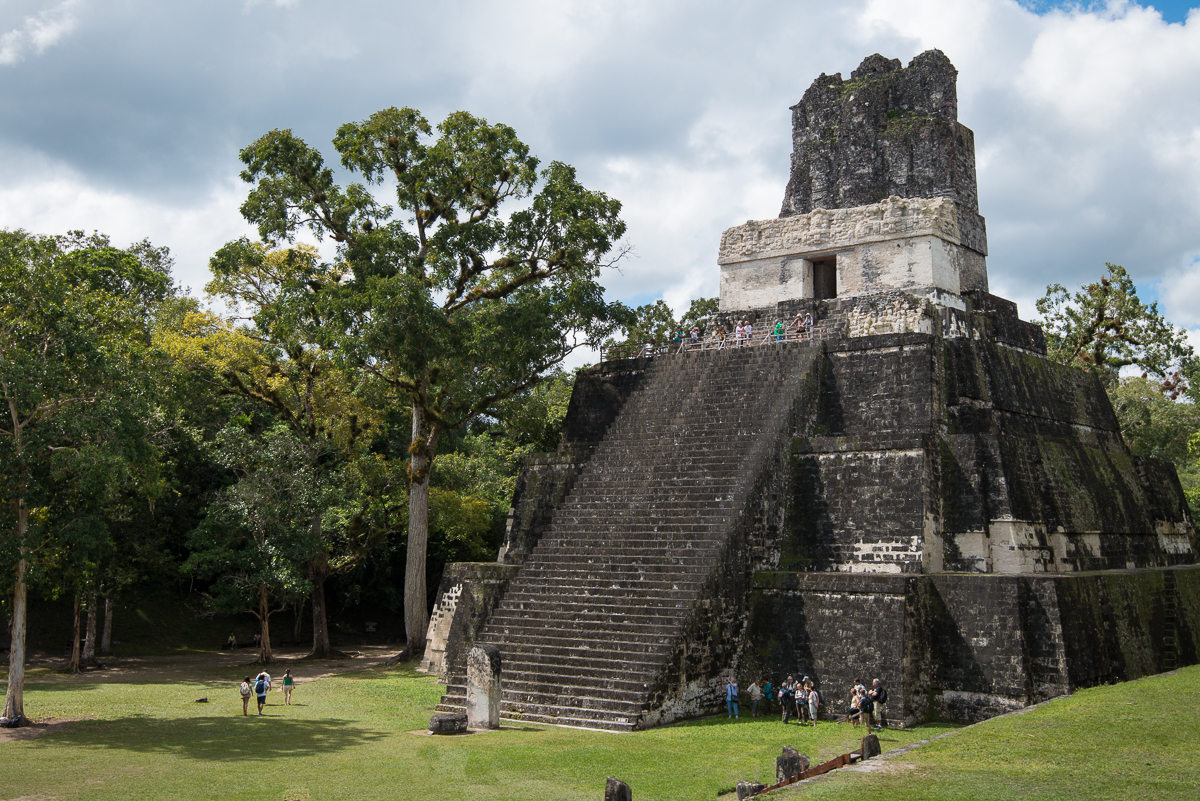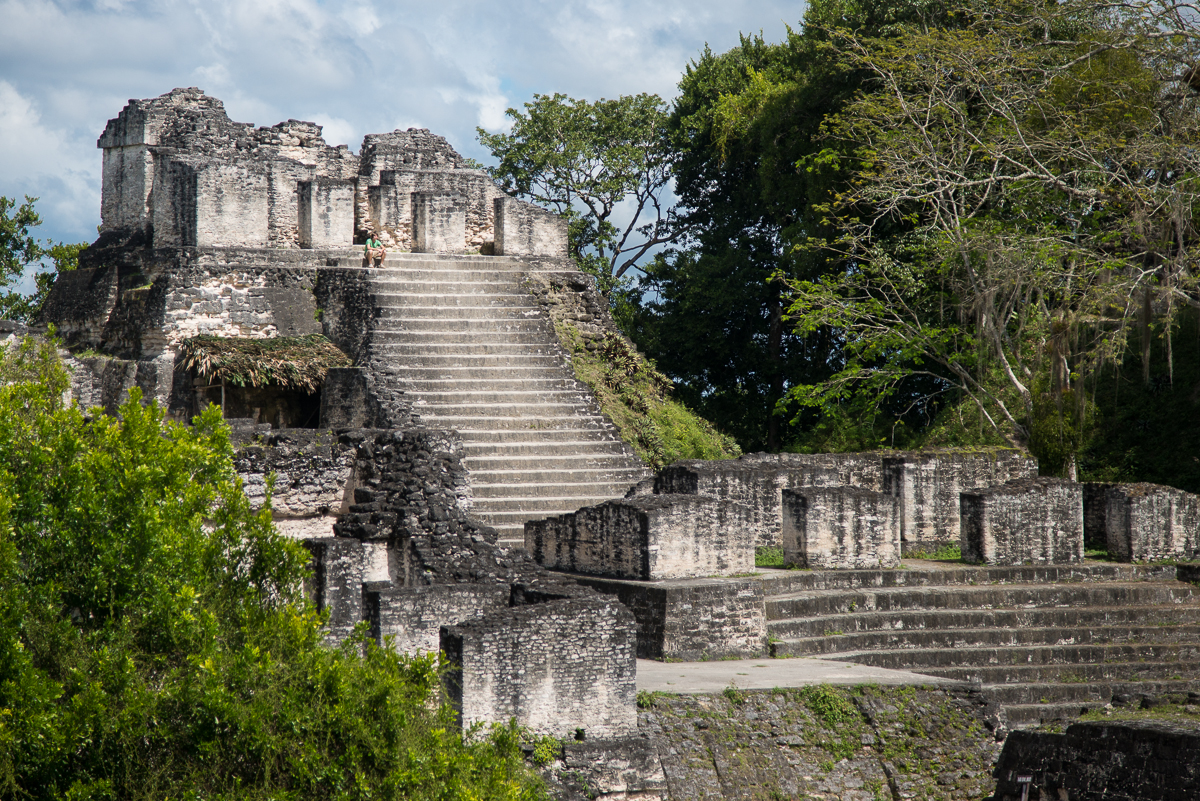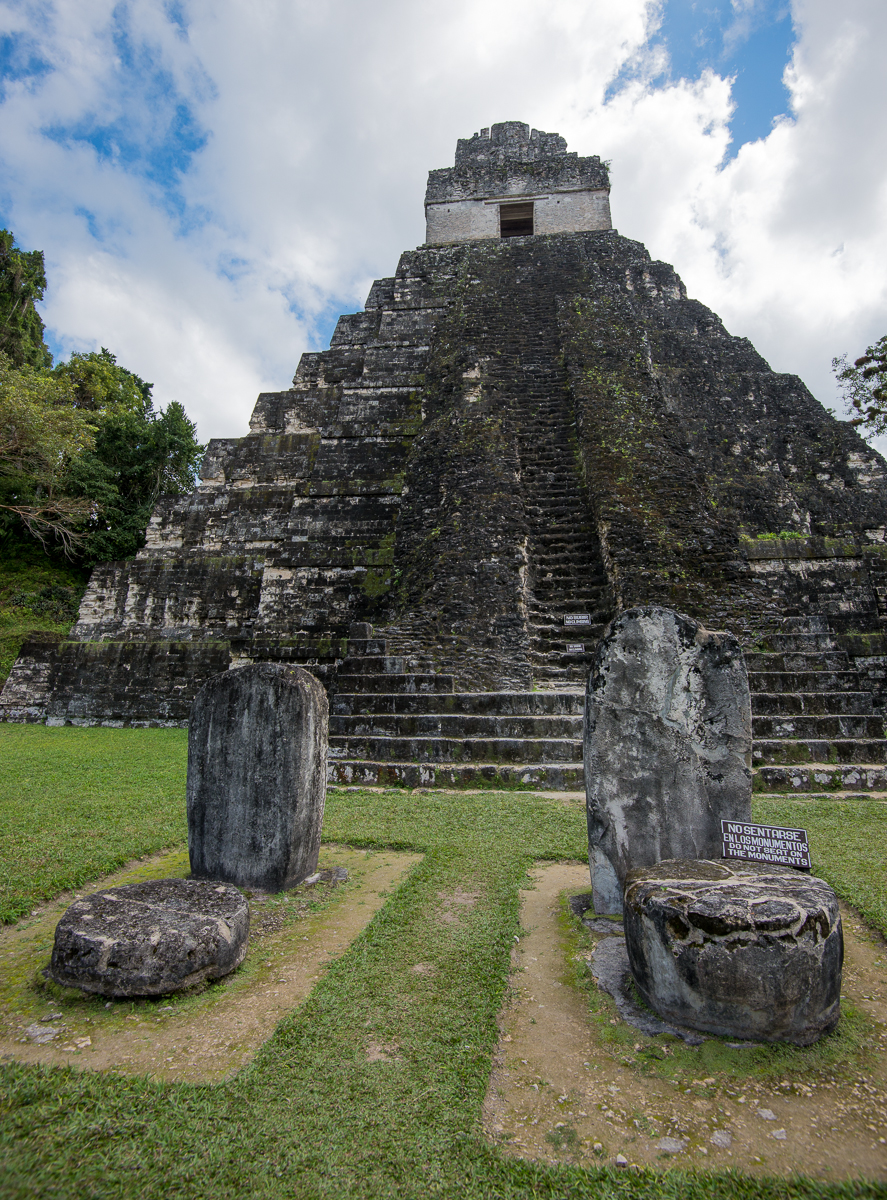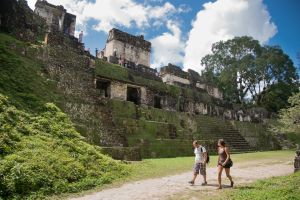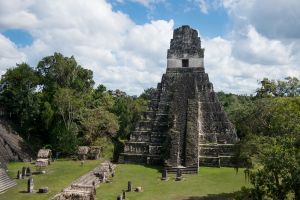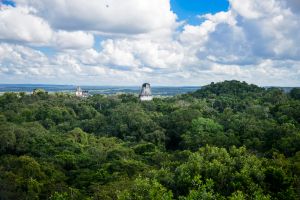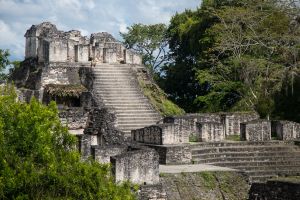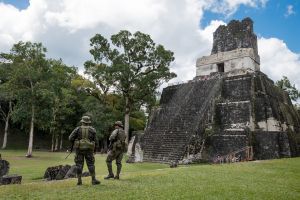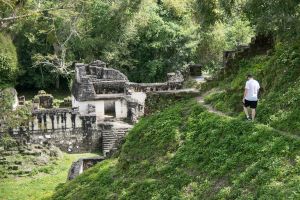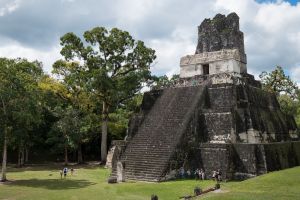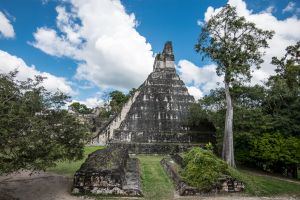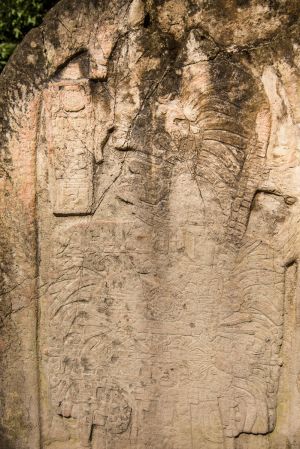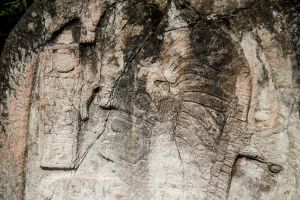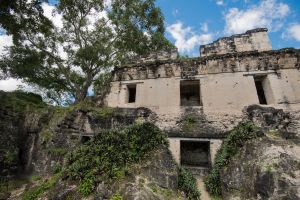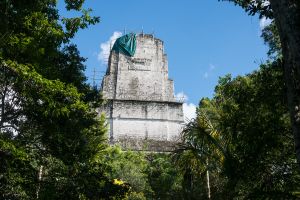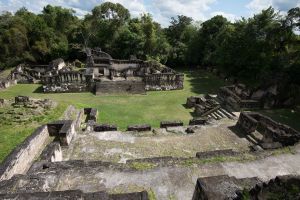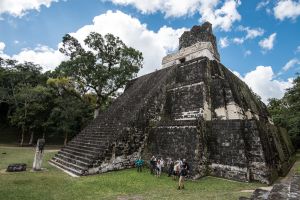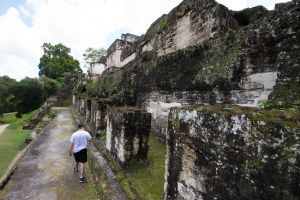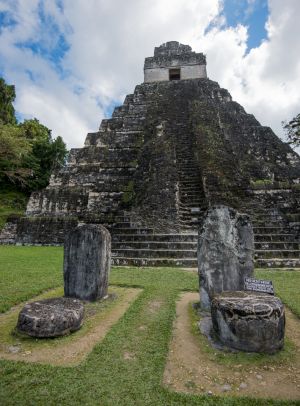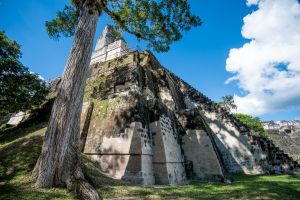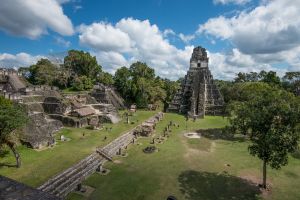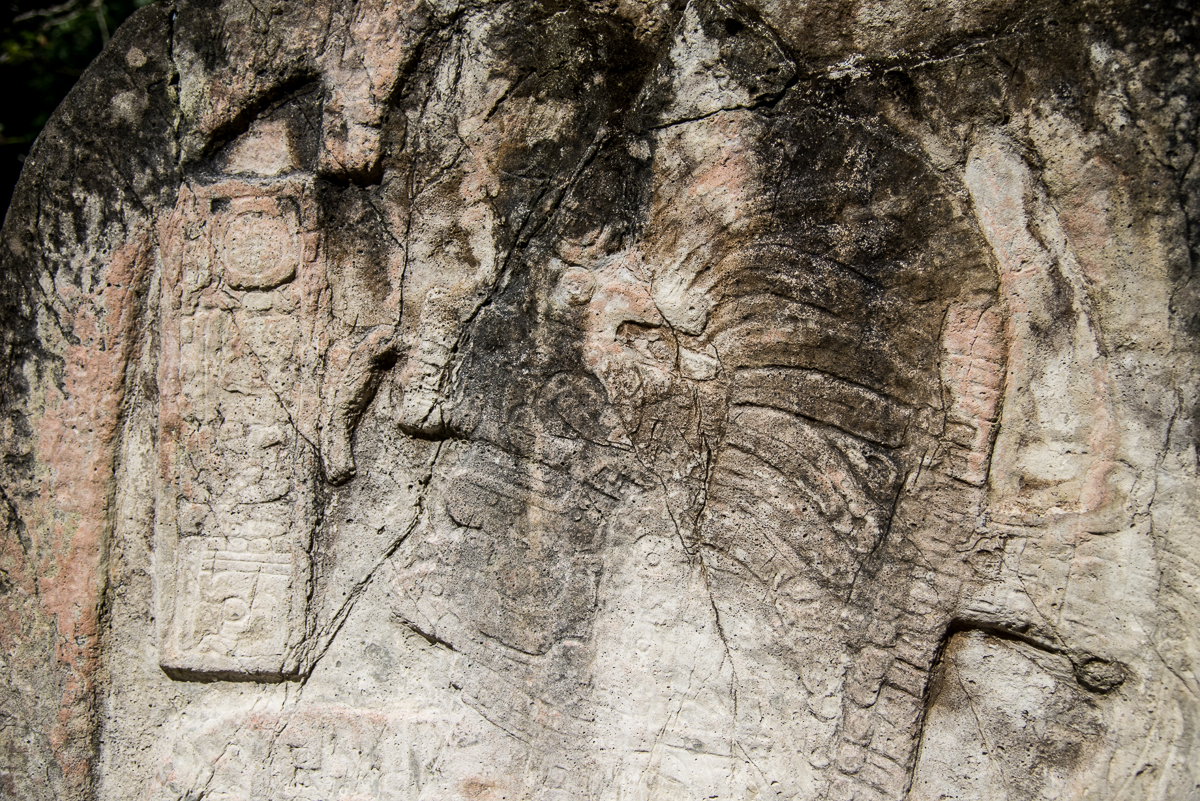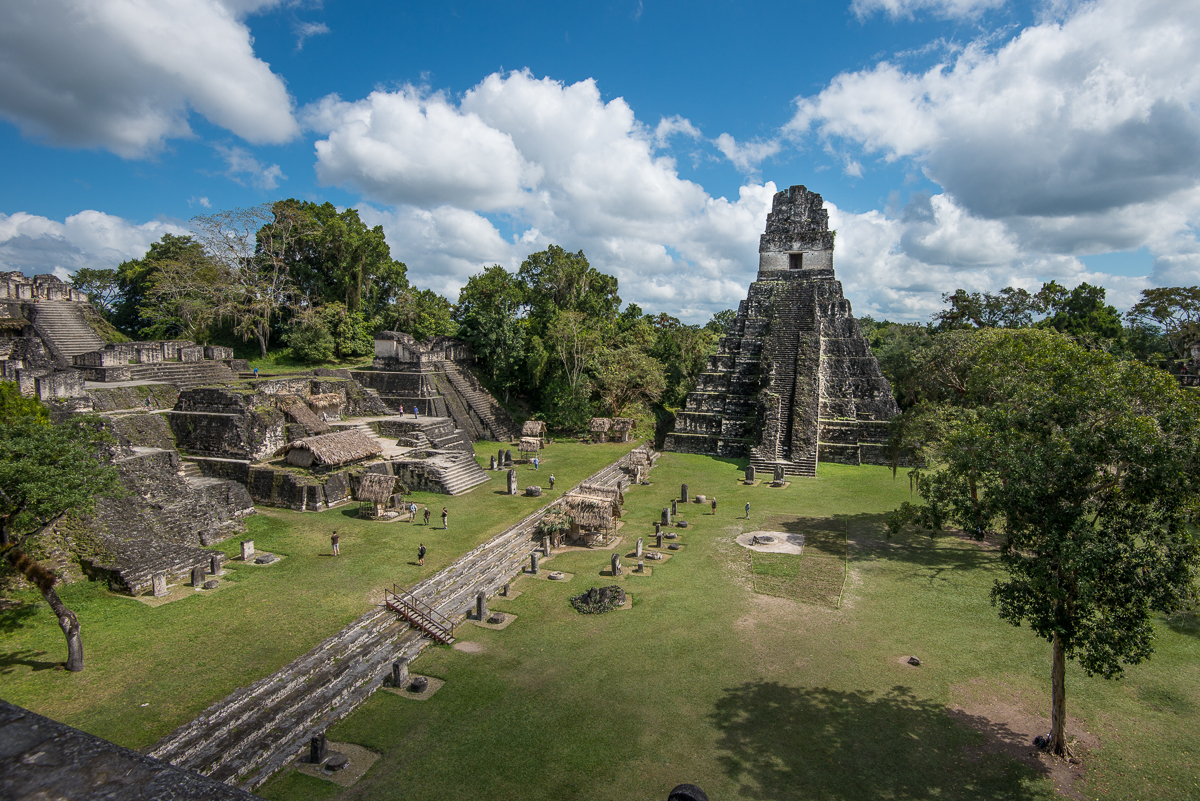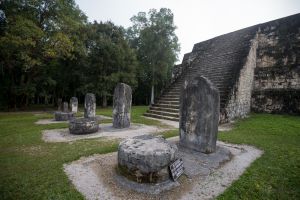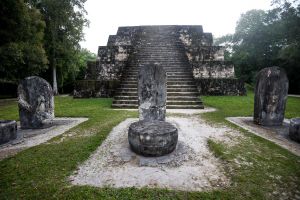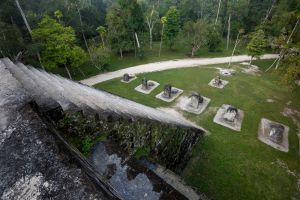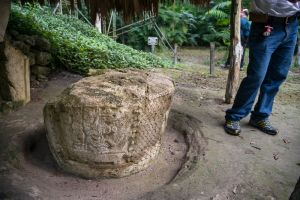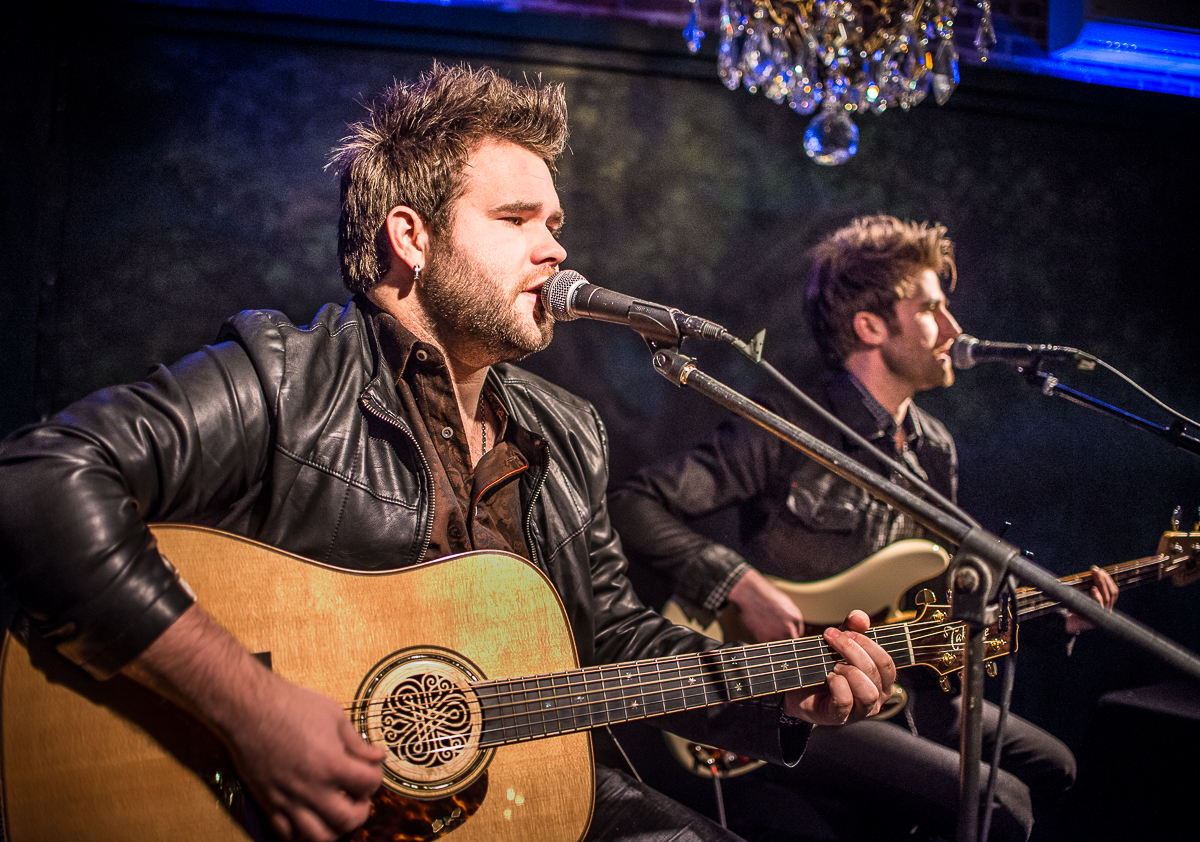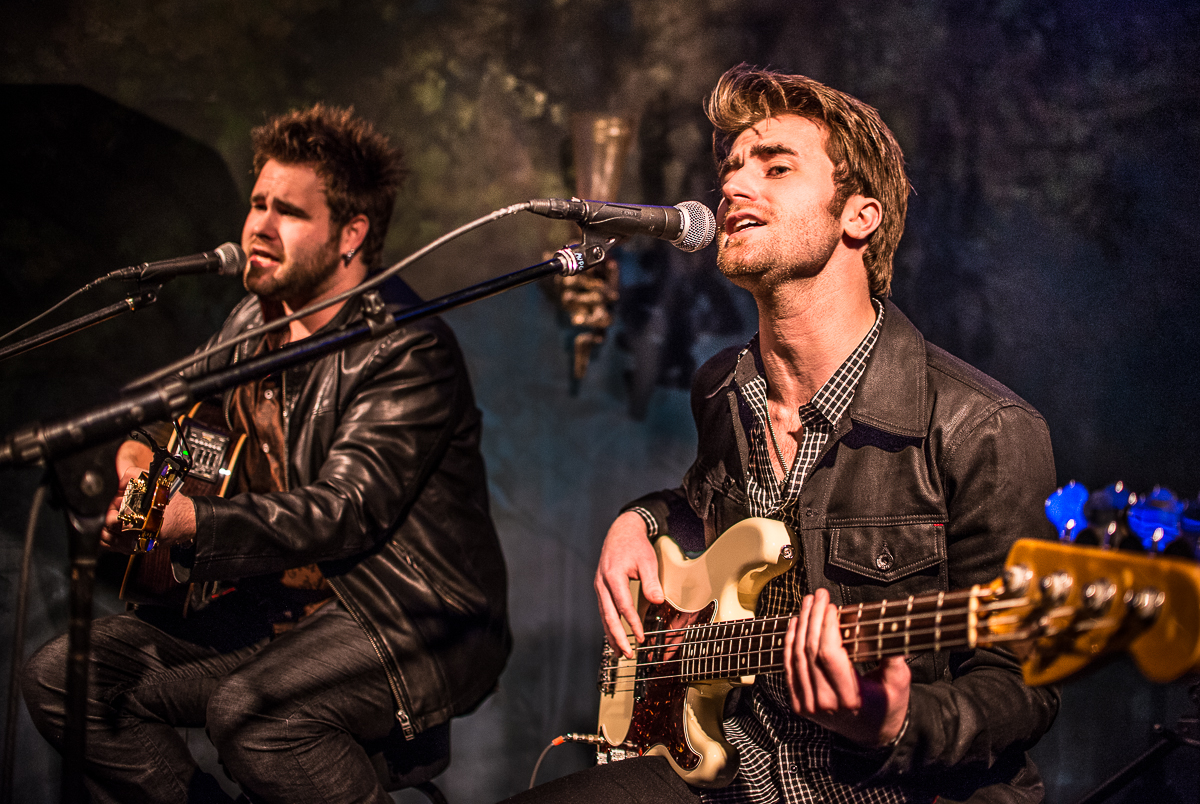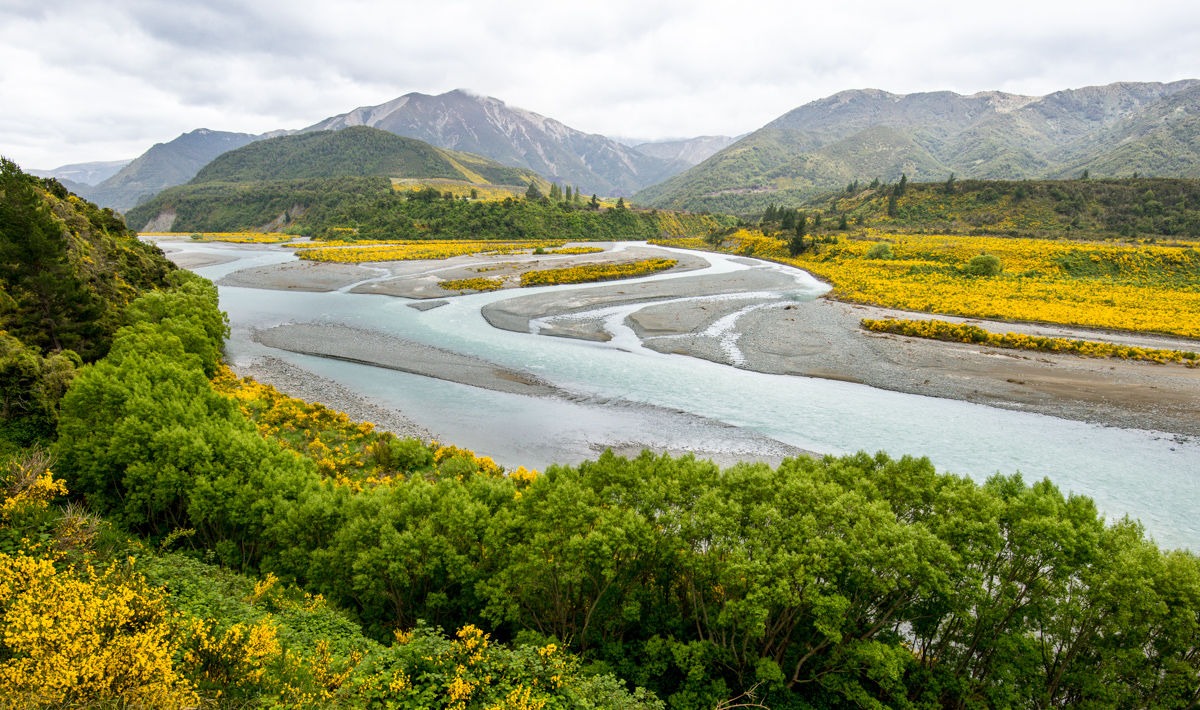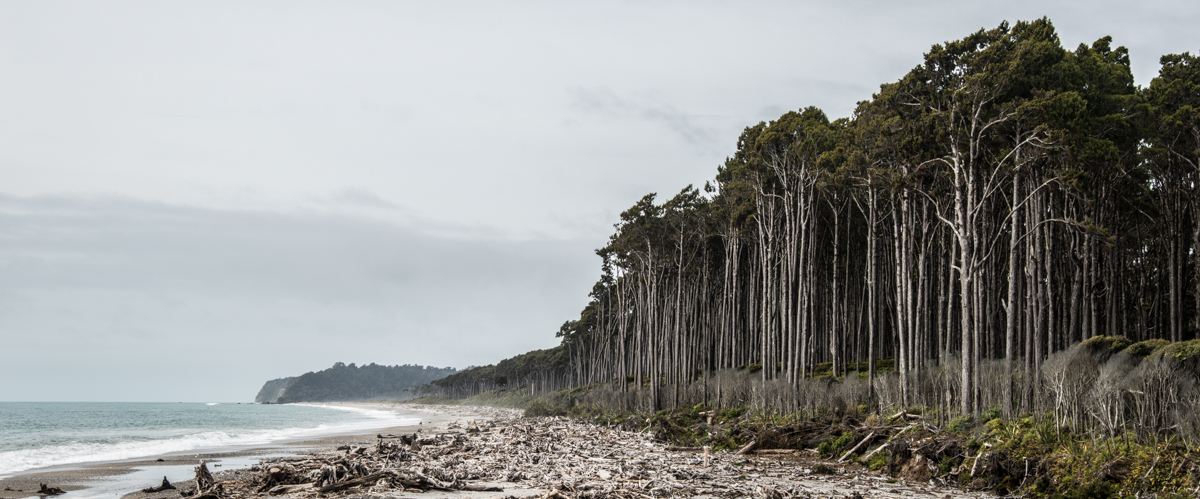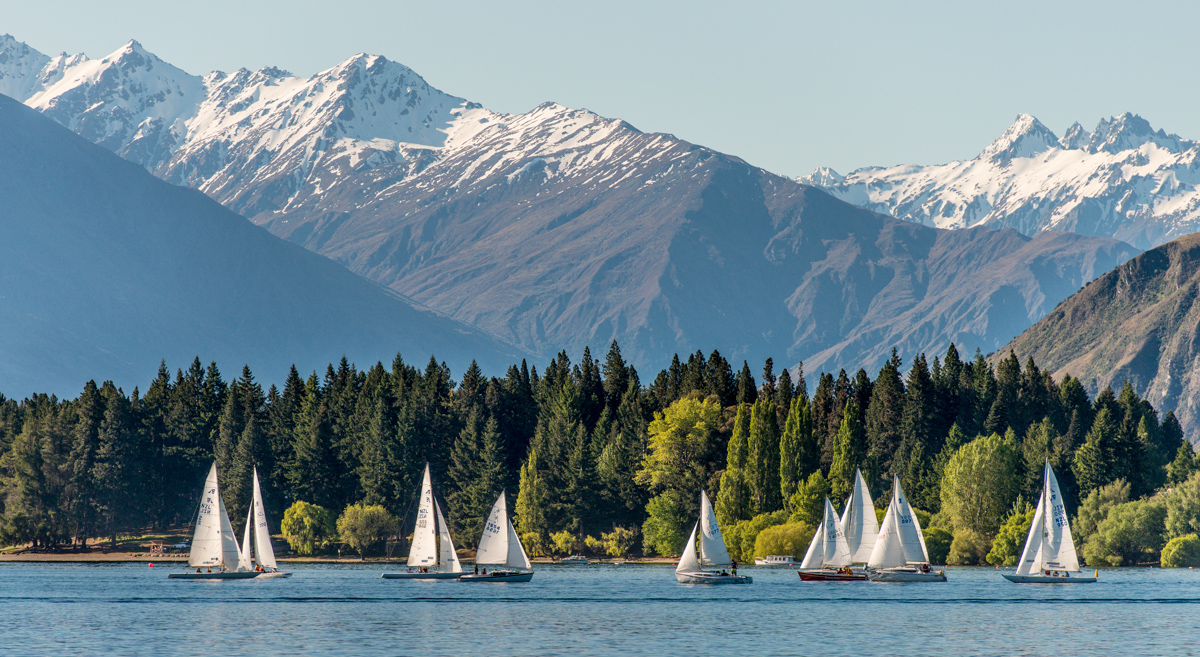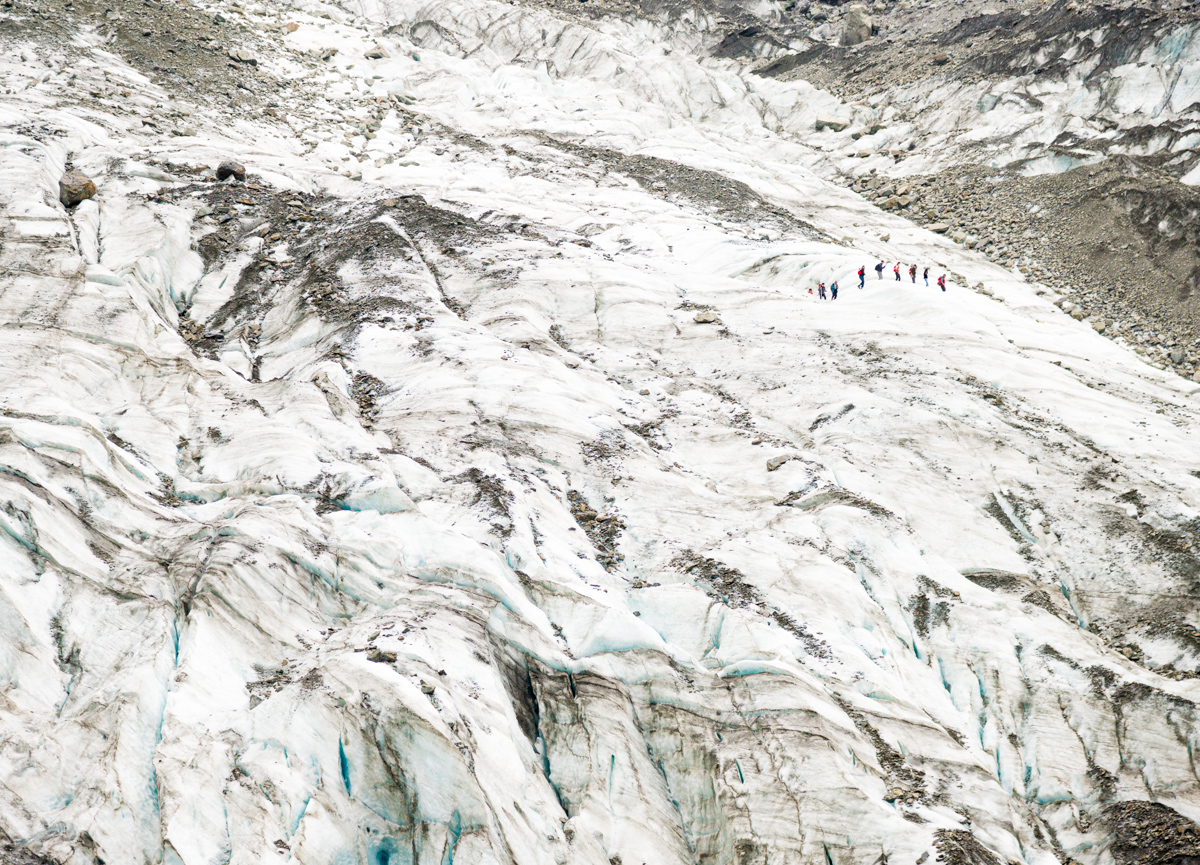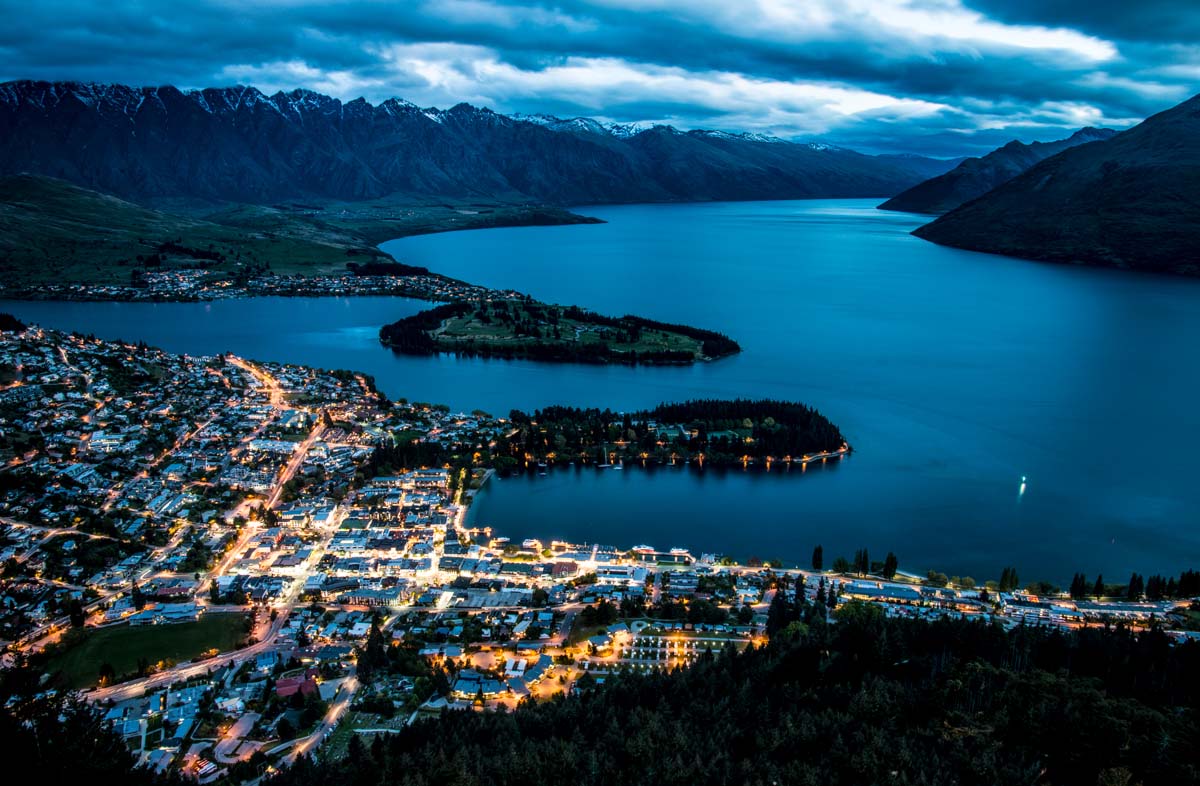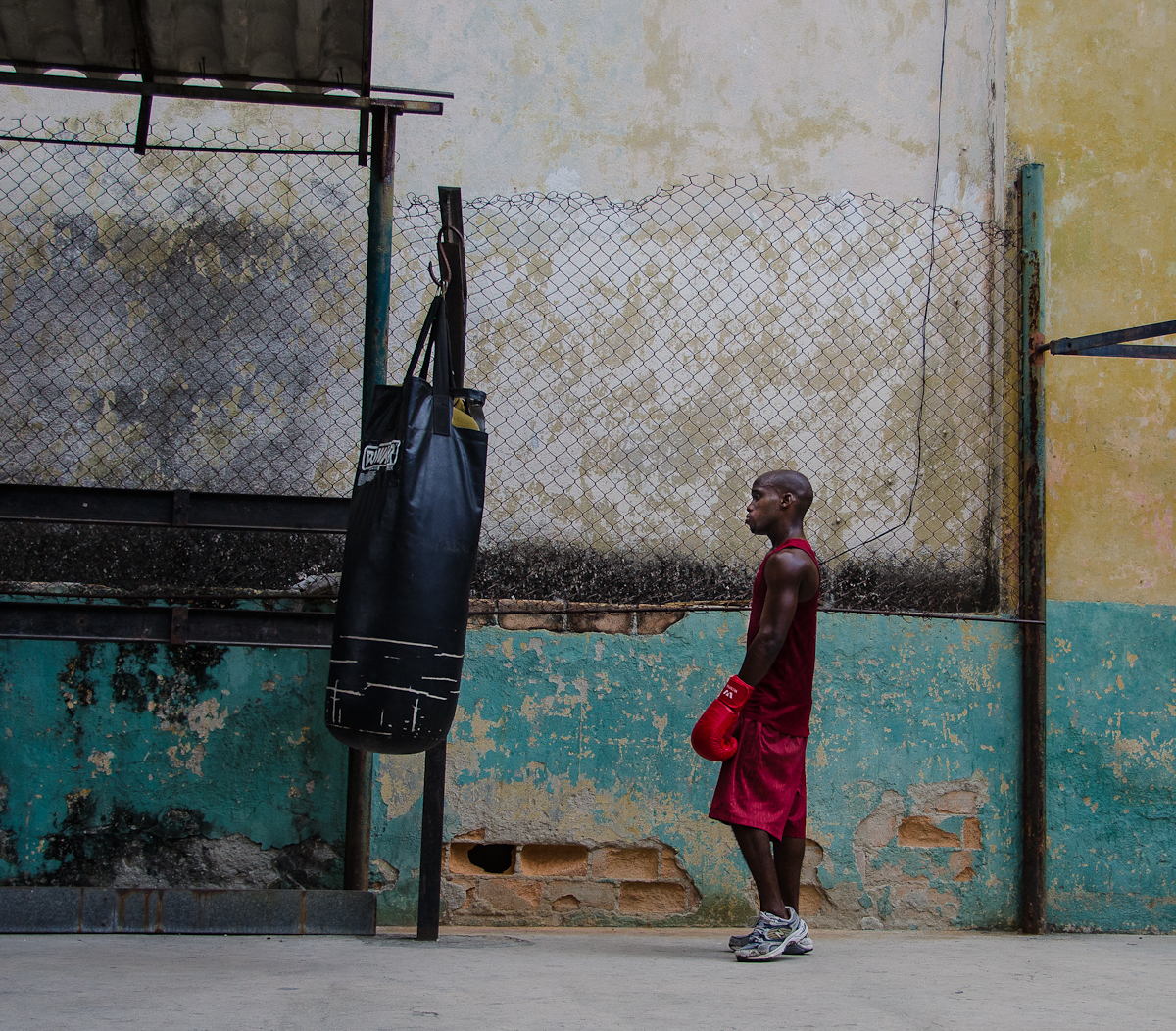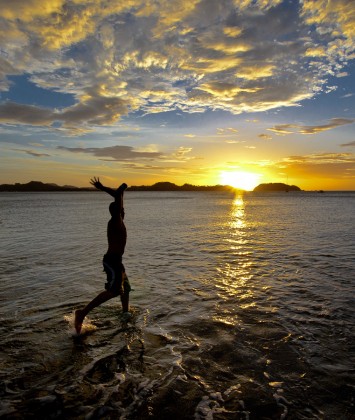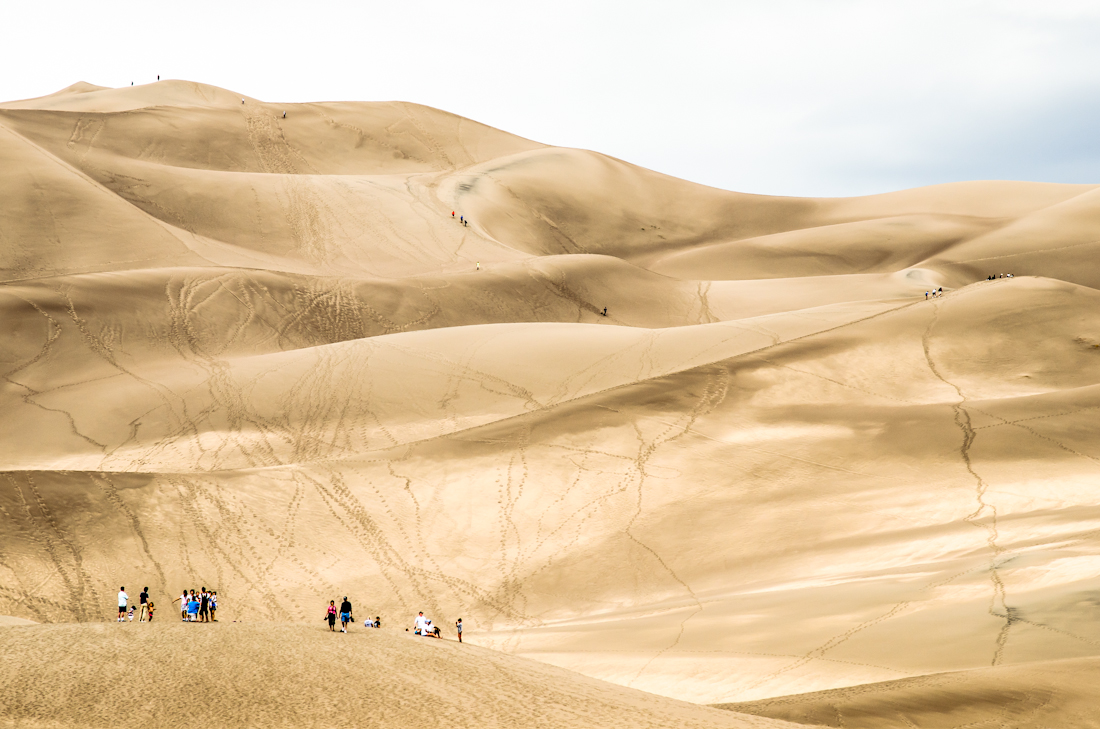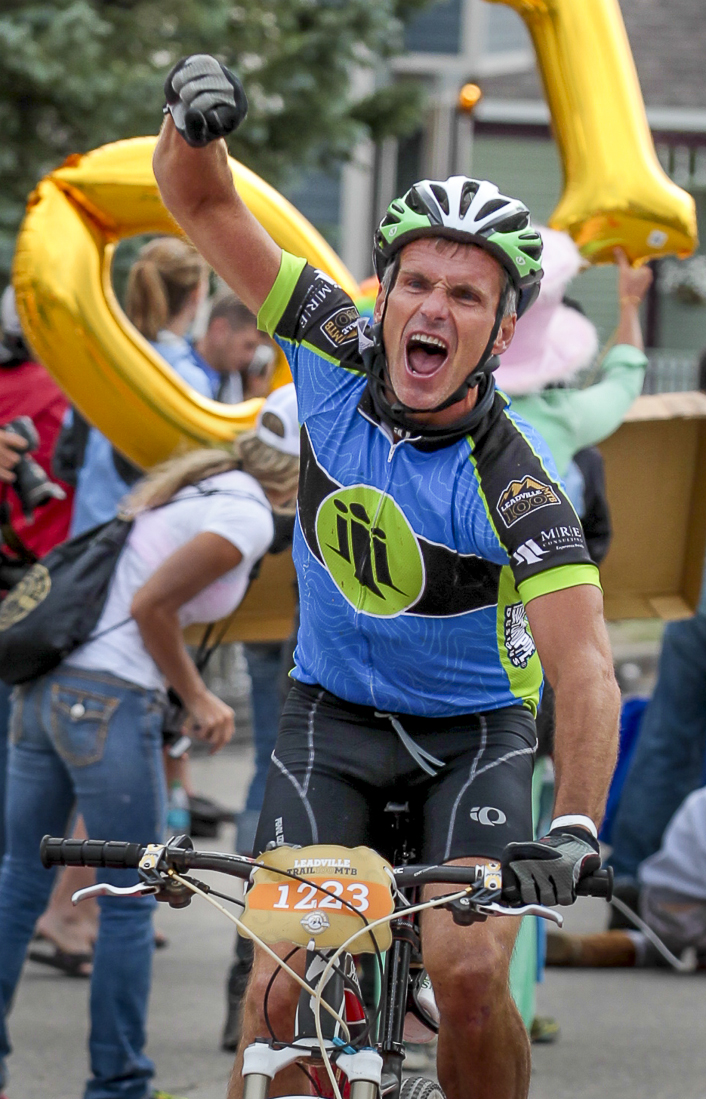Between the archaeological sites celebrating ancient Mayan grandeur is the real world of modern-day rural Guatemala.
I took a short diversion off the highway between Tikal, Guatemala and the Belize border, heading down a randomly chosen side road just to see what I would see. I quickly came upon a plain little lake, with a tiny community on its southwest shore.
In the edge of the lake, in waist-deep water, were fifteen or so little thatch-top huts, most of which had a table-like flat board right at water level. About half of the little huts were in use: with women (and children) doing their laundry by scrubbing their clothes on those boards in the lake water. The village had no electricity and no running water.
What would strike you most about this is the water. You can see in some of the pictures that it’s murky, with lots of green slime near the shore, and with trash floating or piled up on the shore. This is what they’re using to CLEAN their clothes. It must work better than you’d think, because their clothes seem clean enough. Meanwhile, the kids were happily swimming alongside the laundry zone. There were almost no men around, so I’d guess they were mostly off at work somewhere.
As I first made my way through the trees to the lake, I wasn’t sure I’d be welcome. I just waved, smiled, tried out my pitiful Spanish (“Ola! Su lago es muy bonito! Puedo hacer algunes fotos?”), and tried to act like it was the most normal thing in the world for a gringo to wander through the trees with a state-of-the-art camera. I decided to pet one of their dogs so I’d seem friendly, which resulted in my being bitten from behind by a dog not being petted. (Happily it did not break the skin!). The humans were much more receptive: bashful at first, but only a couple said (or motioned) that they didn’t want their pictures taken. As usual, most seemed eager or flattered.
It’s sobering to see how these folks live. And it’s pictures like this that will remind me, in the future, to make that turn off the main road, and to be brave enough to hop out of the car and walk toward whatever looks interesting.
